
Getting Around Vietnam
Motorbike through gorgeous mountain scenery, relax on a train along dramatic coastal roads, bus through rural villages and endless rice fields, fly between destinations quickly; there are several ways of getting around Vietnam, here’s everything you need to know.
Vietnam; one of South East Asia’s most beautiful countries. Endless rice fields, hauntingly beautiful bays, colourful towns, historical ruins, dramatic mountains, unique and delicious food, paradise islands and tropical jungle.

There are multiple ways of getting around Vietnam and which method you choose largely depends on budget, time and what experience you want to have.
I (Helen) have visited Vietnam twice and used different modes of transport. When I backpacked for a month I travelled by bus as it’s the cheapest way to travel Vietnam. When I visited for two weeks, I flew down the coast as it’s much quicker.
Vietnam’s two biggest cities, Hanoi and Ho Chi Minh City are at either end of the country and, chances are, you’ll be travelling in either direction between the two. The cities are extremely well connected and offer direct flights as far as London and Australia as well as great bus options to neighbouring countries.
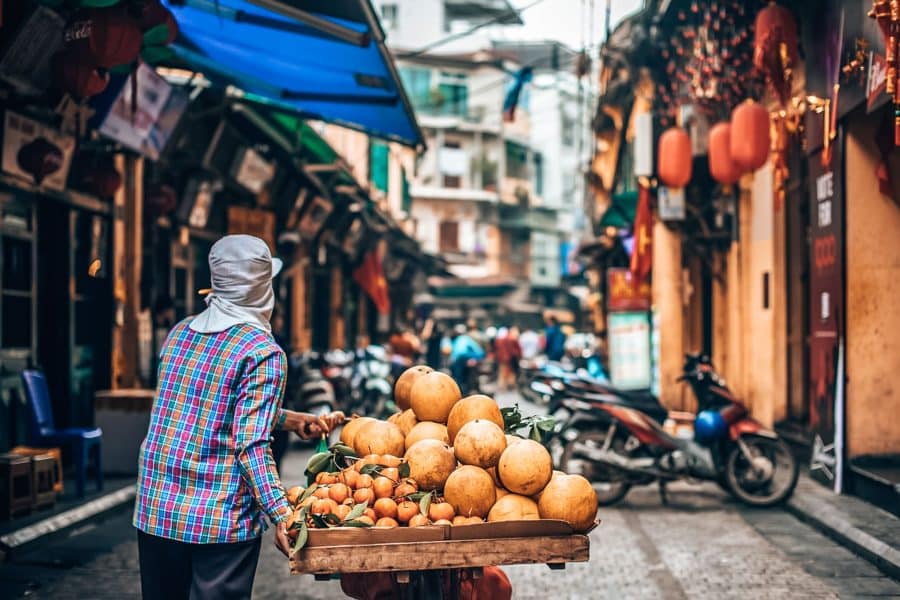
When getting around Vietnam, you have a variety of transport to choose from. Planes, trains, buses and motorbikes, it may feel a bit daunting when trying to decide which is your best option.
In this guide to getting around Vietnam, you’ll read about the different transport options between each area and also how to get around your destination. By the end, you’ll know which combination will suit you best.
No time to read this guide to getting around Vietnam now? No worries, save it for later!
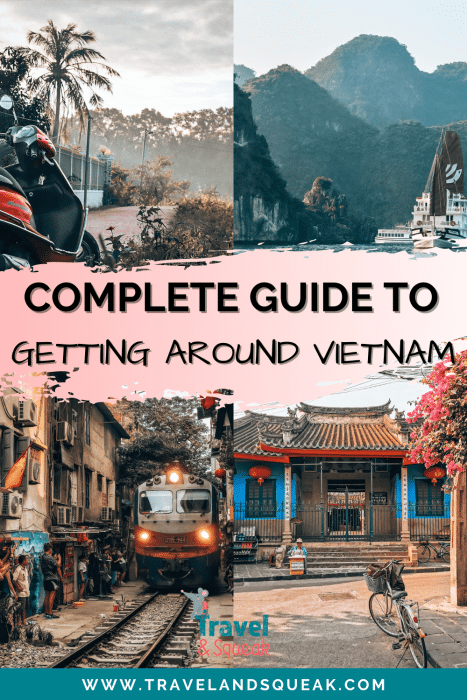
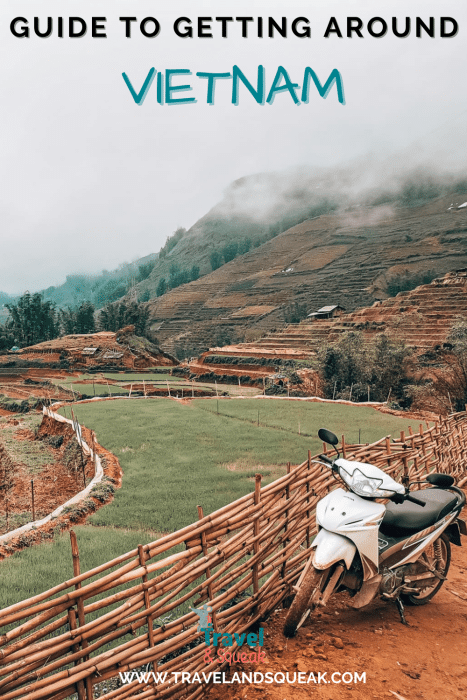
Contents
Getting Around Vietnam
Travelling Around Vietnam by Plane
Travelling around Vietnam is best if you’re limited on time. Working your way along the coast by plane can cut hours, even days off your journey. This is how Andy and I travelled with our two weeks.
People often underestimate driving distances and times in Vietnam and due to the road conditions, journey times can double to what’s advertised. So, it’s sometimes worth hopping on a flight for an hour or two and spending more time enjoying your destination.
Several airlines fly domestically including; Vietnam Airlines, Vietjet, Bamboo Airways, Pacific Airlines and Vasco. These provide great links between the main destinations in Vietnam. Vasco predominantly serves the south of the country to popular tourist destinations such as Phu Quoc and Con Dao Island.
Vietnam Airlines are the biggest so their planes tend to be newer and more comfortable. But, for the hour or two flight, any will do.
Although the most expensive way of travelling around Vietnam, plane fares are very reasonable. We’d recommend booking as far in advance as possible to secure the best deal, however, we didn’t know our route so booked flights a day or two before and still only paid around $40-$60 per person per flight.

Bus; the cheapest way to travel Vietnam
Buses are the most popular and cheapest way to travel Vietnam. It’s also a great way of seeing beautiful rural landscapes and remote villages and experiencing local life. You’ll no doubt leave Vietnam with some interesting bus travel stories.
Several bus companies offer frequent services around the country to the main towns, cities and popular destinations. You have the option of seated buses, sleeper buses or minivans and most are modern and equipped with reclining seats and air-conditioning. Some services even have Wi-Fi and USB charging ports.
Something to bear in mind if travelling around Vietnam by bus is that it’s not quick. The road conditions, and volume of motorbikes, trucks and animals mean buses won’t reach more than around 50 km/h. In your timings, allow for journey times to potentially double.
Although buses are modern and well-equipped, don’t expect much legroom unless travelling by minivan.
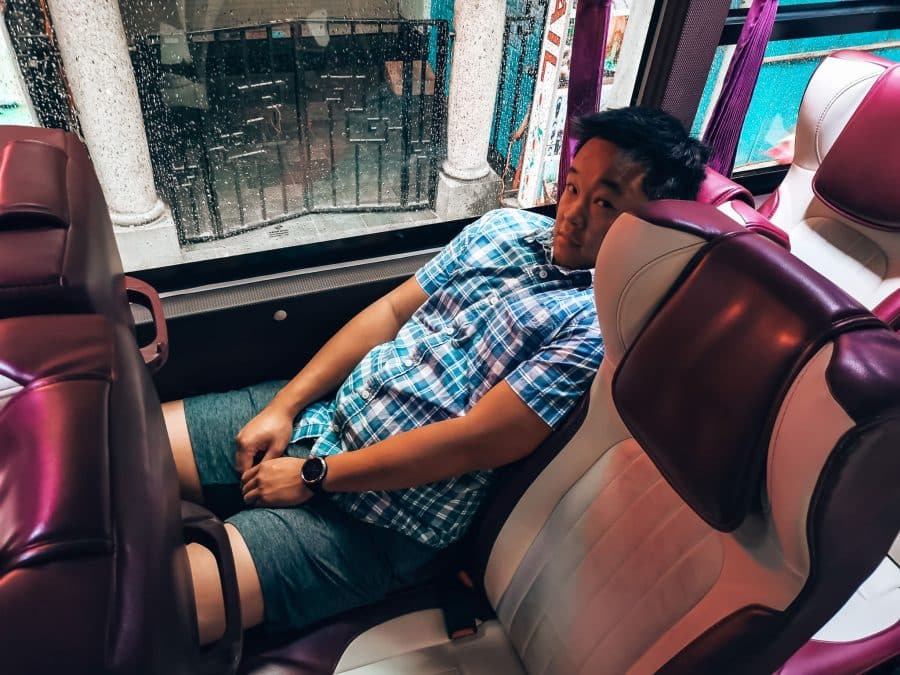
If you’re taking sleeper buses, be extremely careful of your belongings! These are the most common times tourists are robbed.
Our top tip: book your buses at least a day or two in advance and if you’re travelling around a public holiday in Vietnam, book a few weeks in advance.
Get Your Guide is a great place to book your buses online so you don’t need to worry about going to the bus stations in each destination and you can make the most of your time. Click on any of the links below to be taken to the website for more routes.
Getting Around Vietnam by Train
Getting around Vietnam by train is another great way of seeing the beautiful countryside. Averaging about 40 km/h, travelling by train is relaxing and provides wonderful insights into local life.
A single 2600-kilometre track connects the north and south of Vietnam and is managed by Vietnam Railways. One of the most popular train routes is the Reunification Express which travels between Ho Chi Minh City and Hanoi in around 30 hours and stops at many places along the coast.
This train is the one that travels through the little neighbourhood in Hanoi pinning you against the wall. You can read more about this in our Best Things to do in Hanoi post here.


Other popular train routes in Vietnam are from Hanoi to Lao Cai; the gateway to Sapa which tends to be overnight sleeper trains and from Hanoi to Dong Dang; the town on the border of China.
Getting around Vietnam by train is more expensive than the bus but cheaper than flying.
With classes; aim as high as your budget allows! Firstly, you have ‘hard seats’ which are hard wooden benches. Fine for shorter journeys but carriages are crammed full, windows are caged, it’s dirty and people will be smoking (even though trains are non-smoking!).
Next are ‘soft seats’ which are comfier and good for day travel but difficult to sleep in.
Thirdly are hard sleepers which are thin mattresses in a 6-berth carriage. The top berth is the cheapest, followed by the middle and the bottom is the most expensive. These carriages don’t have doors so be careful of your belongings. It’s worth going for the top berth as these are the safest.
Finally, you have soft sleepers. These are the comfiest and the beds are soft. You’re in berths of 4, with every bed costing the same. These carriages have doors so they’re more secure.
Our top tip: don’t expect your train to arrive on time. The track is a single lane so trains are often delayed waiting for a train coming in the other direction.
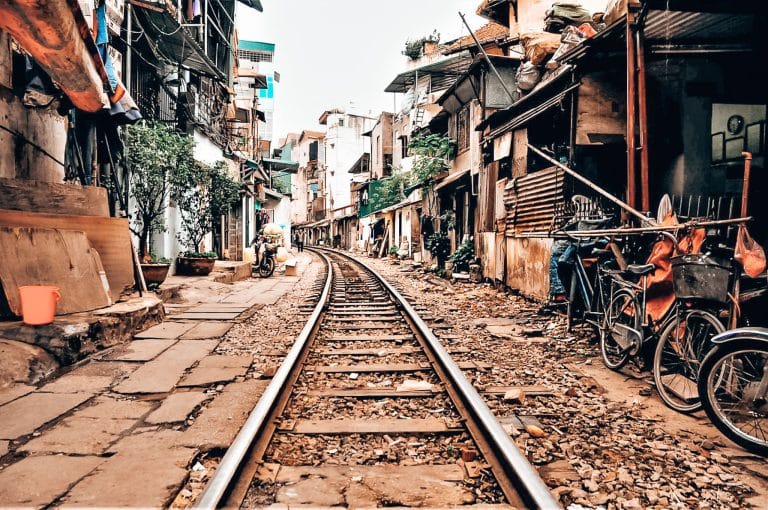
Travelling Around Vietnam on Motorcycle
The absolute best way of getting around Vietnam for complete freedom, flexibility and the feeling of adventure is by motorbike!
Travelling by motorbike allows you to explore the country at your own pace and in a way you just can’t on public transport or with a tour.
Discover off-the-beaten-track gems, rural villages, lush green national parks, stunning coastal roads and spectacular views of the Central Highlands as you observe the local way of driving.
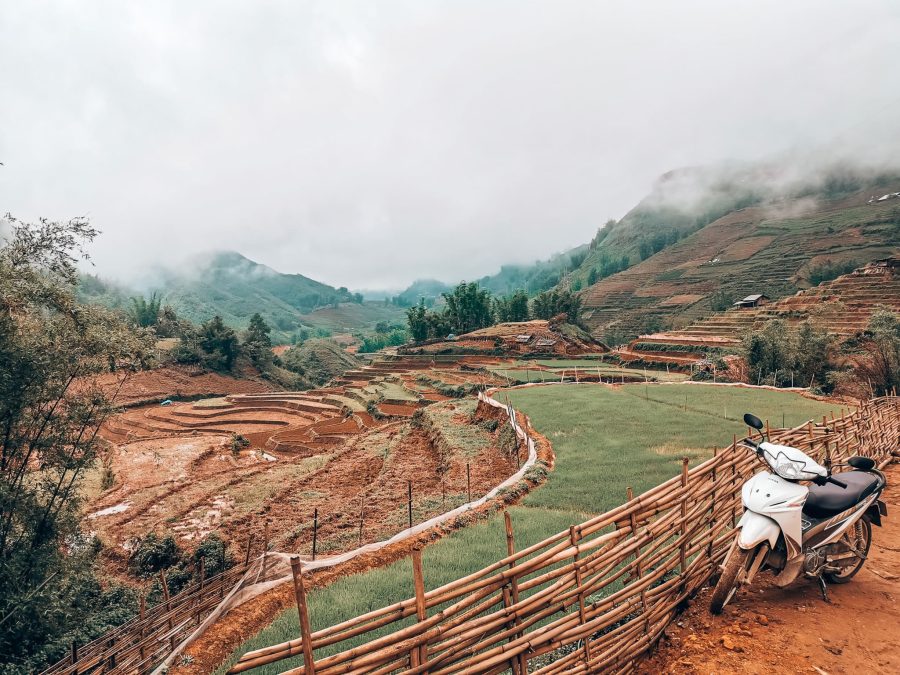
There are several options when it comes to travelling Vietnam by motorbike.
Firstly, you can rent a motorbike. You will either have to return it to the same place or pay someone to drive it back. If you’re planning a long trip, it’s probably worth buying a bike and selling it when you’re finished.
Finally, if you don’t have the confidence to drive yourself, there are several motorbike tours you can do where you sit on the back of a guide’s bike. Get Your Guide has a range of these tours which you can browse below or click on any to be taken to their website for more.
If you’re driving a motorbike yourself, we’d recommend having comprehensive travel insurance and making sure they will cover any accidents. Also, be careful of driving and road conditions as they’re very different to Western countries. You’ll also have to hand in some ID, probably a passport, which will be returned when the motorbike is.
Main highways are much improved but in the countryside, expect huge potholes, loose gravel and lots of roaming wild animals.
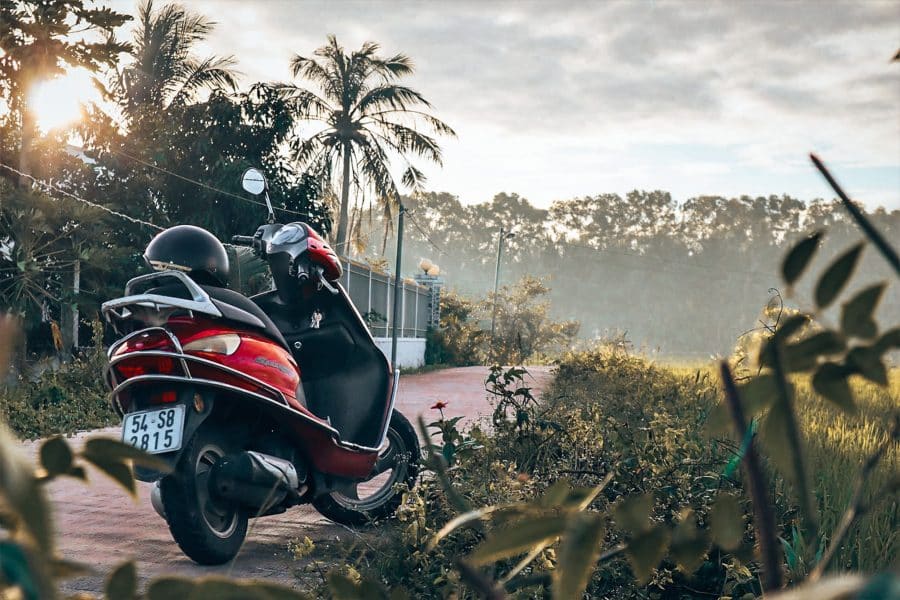
Getting Around Vietnam Towns and Cities
There are several ways of getting around Vietnam’s towns and cities.
One of the best ways is by bicycle; especially around Hoi An’s beautiful countryside or the coastal islands. You can rent bikes through a lot of accommodation or a bike rental shop.

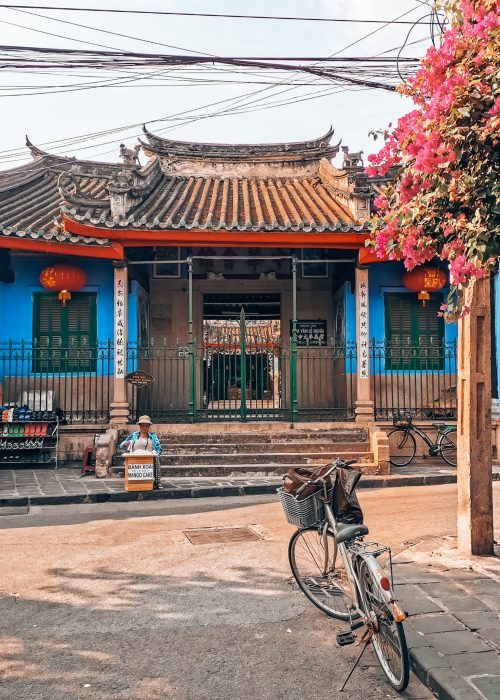
A great and inexpensive way of getting around Vietnam’s towns and cities is motorbike taxis, ‘Xe Om’. You’ll find them easily in tourist areas. There’s no meter so haggle on a price first and we’d recommend asking your hotel for a rough cost for your journey.
If you’re in a group, a taxi will be cheaper than several motorbikes. These can be a slower way of travelling, however, due to the traffic. We’d recommend using Grab Taxi rather than hailing one down as we’ve heard these can rip tourists off.
I hope you’ve found this post on getting around Vietnam useful. If you have any questions feel free to leave a comment, get in contact and remember to follow us on Instagram.

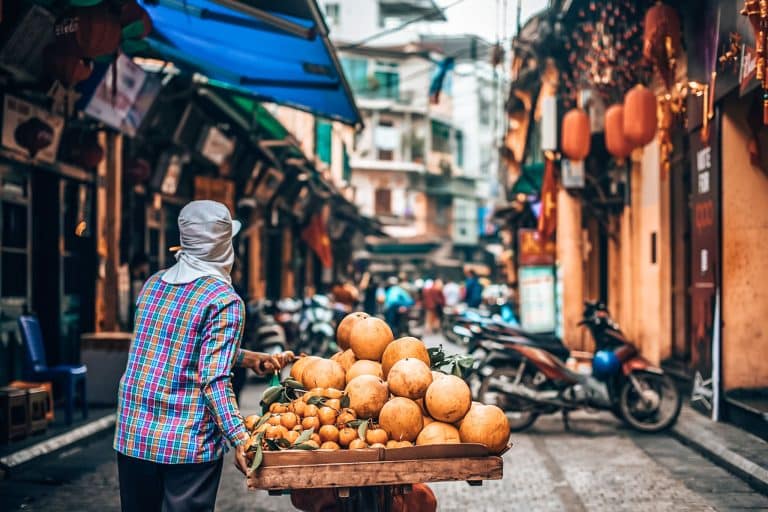


4 thoughts on “Getting Around Vietnam: What You Need to Know”
I’m teaching English in Hanoi, and trying to explore more of this country when I have time. Thank you for the great guide
It’s such a beautiful city, I hope you have an amazing time!
Thanks for your awesome blog post about our beautiful country <3
I’m glad you enjoyed it 🙂